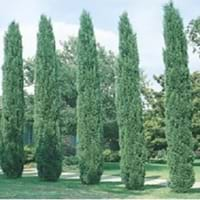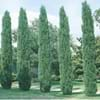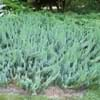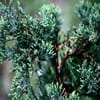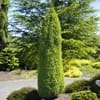Life Span
Perennial
Perennial
Type
Needled or Scaled Evergreen
Perennial
Origin
Southern Europe, Mediterranean, Western Asia
Hybrid origin
Types
Moroccan cypress
South Tibet cypress
Cheng's cypress
Yunnan cypress
Saharan cypress
weeping cypress
Tibetan cypress
Mediterranean cypress
Tonkin cypress
Himalayan cypress
Vietnamese cypress
Victoria Rhubarb
Colorado Red Rhubarb
Turkish Rhubarb
Habitat
Lowland, Mountain tops, Mountains, Terrestrial, tropical environments, Urban areas
gardens, Grassland, Humid climates, Tropical regions, Urban areas
USDA Hardiness Zone
7-10
5-8
Sunset Zone
8, 9, 10, 11, 12, 13, 14, 15, 18, 19, 20, 21
2b, 3a, 3b, 4, 5, 6, 7, 14, 15, 16, 17
Habit
Narrow Upright/Fastigiate
Clump-Forming
Flower Color
Non Flowering Plant
Light Pink
Flower Color Modifier
Bicolor
Not Available
Fruit Color
Non Fruiting Plant
Burgundy
Leaf Color in Spring
Dark Green
Green, Dark Red
Leaf Color in Summer
Dark Green
Green, Dark Red
Leaf Color in Fall
Dark Green
Green, Dark Red
Leaf Color in Winter
Dark Green
Light Green
Leaf Shape
Lance shaped
Compound
Plant Season
Spring, Summer, Fall, Winter
Spring, Summer, Fall
Sunlight
Full Sun, Partial Sun
Full Sun, Partial Sun
Type of Soil
Loam
Clay, Loam
The pH of Soil
Acidic, Neutral
Acidic, Neutral, Alkaline
Soil Drainage
Well drained
Average
Bloom Time
Not Available
Summer, Late Summer
Tolerances
Drought
Drought
Where to Plant?
Ground
Ground
How to Plant?
Seedlings, Stem Planting, Transplanting
Stem Planting
Plant Maintenance
Medium
Medium
Watering Requirements
Allow to dry out slightly between watering, Needs 2-3 times watering per week, Requires watering in the growing season, Use Mulches to help prevent water loss during hot and windy weather
Do Not over Water, Requires regular watering, Use Mulches to help prevent water loss during hot and windy weather, Water Deeply
In Summer
Lots of watering
Lots of watering
In Spring
Moderate
Moderate
In Winter
Average Water
Average Water
Soil pH
Acidic, Neutral
Acidic, Neutral, Alkaline
Soil Type
Loam
Clay, Loam
Soil Drainage Capacity
Well drained
Average
Sun Exposure
Full Sun, Partial Sun
Full Sun, Partial Sun
Pruning
No pruning needed in the early stages, Prune if you want to improve plant shape, Prune prior to new growth, Remove deadheads, Shape and thin as needed
Remove damaged leaves, Remove dead branches, Remove dead leaves
Fertilizers
All-Purpose Liquid Fertilizer
All-Purpose Liquid Fertilizer
Pests and Diseases
Fungal Diseases
Red blotch
Plant Tolerance
Drought
Drought
Flower Petal Number
Single
Not Available
Foliage Texture
Fine
Coarse
Foliage Sheen
Matte
Glossy
Attracts
Birds, Hummingbirds, Squirrels
Not Available
Allergy
no allergic reactions
Skin irritation
Aesthetic Uses
Beautification
Showy Purposes
Beauty Benefits
Not Available
Not Available
Environmental Uses
Air purification
Air purification
Medicinal Uses
No Medicinal Use
Not Available
Part of Plant Used
Bark
Whole plant
Other Uses
Used as Ornamental plant, Used for fragrance, Wood is used for making furniture, Wood log is used in making fences
Culinary use, Used as Ornamental plant
Used As Indoor Plant
No
No
Used As Outdoor Plant
Yes
Yes
Garden Design
Feature Plant, Hedges, Screening, Wind Break, Street Trees
Feature Plant, Mixed Border
Botanical Name
CUPRESSUS sempervirens
RHEUM 'Ace of Hearts'
Common Name
Tuscan cypress
Pencil pine
Graveyard cypress
Ace of Hearts Ornamental Rhubarb, Ornamental Rhubarb
In Hindi
इतालवी सरू
सजावटी प्रकार का फल
In German
Italienisch Cypress
Ornamental Rhabarber
In French
Italian Cypress
rhubarbe ornementale
In Spanish
Ciprés italiano
Ornamental de ruibarbo
In Greek
Ιταλικά Cypress
καλλωπιστικά Ραβέντι
In Portuguese
Italian Cypress
ornamental ruibarbo
In Polish
Italian Cypress
ozdobne Rabarbar
In Latin
Cupressus
decentius Rhubarb
Phylum
Pinophyta
Tracheophyta
Class
Pinopsida
Not Available
Order
Pinales
Caryophyllales
Family
Cupressaceae
Polygonaceae
Clade
Not Available
Angiosperms, Core eudicots, Eudicots
Tribe
Not Available
Not Available
Subfamily
Cupressoideae
Not Available
Importance of Italian Cypress and Ornamental Rhubarb
Want to have the most appropriate plant for your garden? You might want to know the importance of Italian Cypress and Ornamental Rhubarb. Basically, these two plants vary in many aspects. Compare Italian Cypress and Ornamental Rhubarb as they differ in many characteristics such as their life, care, benefits, facts, etc. Every gardener must at least have the slightest clue about the plants he wants to plant in his garden. Compare their benefits, which differ in many ways like facts and uses. The medicinal use of Italian Cypress is No Medicinal Use whereas of Ornamental Rhubarb is Not Available. Italian Cypress has beauty benefits as follows: Not Available while Ornamental Rhubarb has beauty benefits as follows: Not Available.
Compare Facts of Italian Cypress vs Ornamental Rhubarb
How to choose the best garden plant for your garden depending upon its facts? Here garden plant comparison will help you to solve this query. Compare the facts of Italian Cypress vs Ornamental Rhubarb and know which one to choose. As garden plants have benefits and other uses, allergy is also a major drawback of plants for some people. Allergic reactions of Italian Cypress are no allergic reactions whereas of Ornamental Rhubarb have Skin irritation respectively. Having a fruit bearing plant in your garden can be a plus point of your garden. Italian Cypress has no showy fruits and Ornamental Rhubarb has showy fruits. Also Italian Cypress is not flowering and Ornamental Rhubarb is not flowering . You can compare Italian Cypress and Ornamental Rhubarb facts and facts of other plants too.
